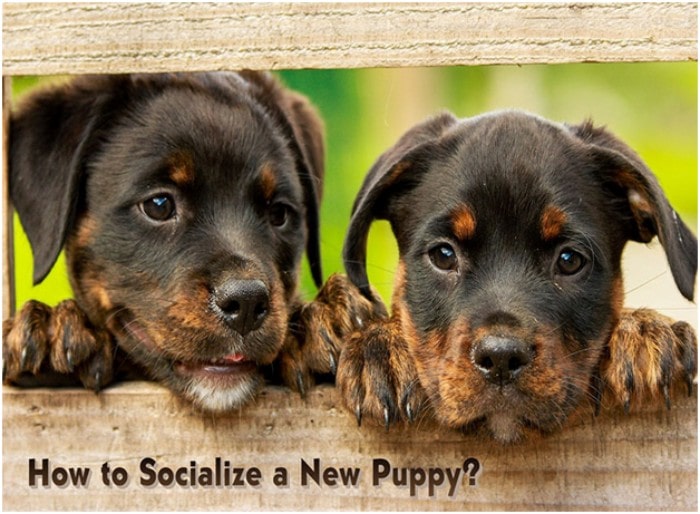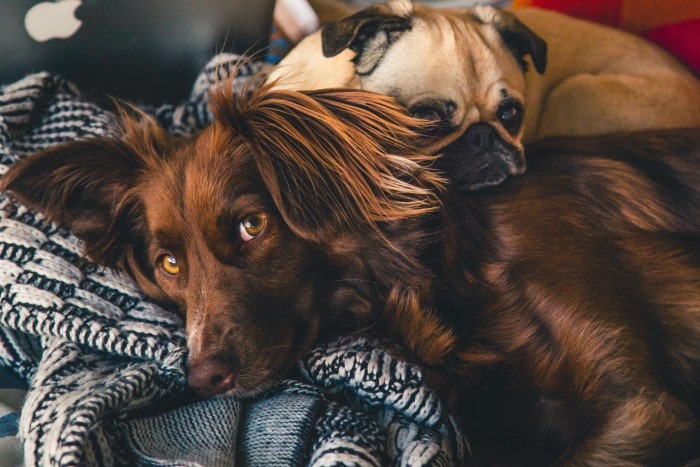Effective socialization is essential for your relationship with your puppy since it can have a significant impact on the animal’s long-term physical and mental health.
Your puppy needs to be socialized if you want a content, self-assured, and well-behaved dog. While socializing your puppy only takes a few weeks, the skills it learns in its first few months of life will serve it well for the rest of its life.
Many people like dogs and desire a pet but suffer from allergies. Many dog breeds are hypoallergenic, which means they shed less and you may welcome them into your home without having to worry about an allergic reaction all the time.
When to Start Puppy Socialization
Before you even bring your pet home, the socialization process should begin when you purchase a puppy from a trustworthy breeder. The initial few weeks of your puppy’s life, when they are being handled gently by the breeder, are important for the growth of a sociable, assured dog.
Puppies may start approaching people who are passively observing them as early as three weeks of age, so having a skilled breeder who promotes a pleasant experience with people — adults and children — will help mold the puppy’s behavior as an adult.
Good breeders give their puppies safe indoor and outdoor habitats, car rides, crates, sounds, and smells to explore as they grow.
Your puppy will go through a socialization phase during the first three months of life that will permanently influence their personality and how they respond to their environment as an adult dog.
Continuing socialization and exposing your puppy to various surroundings after the first 12 to 14 weeks of life is important. This encourages positive behavior. In order for pups to feel safe and secure while learning new things, maintaining a good atmosphere is crucial.
Why Puppy Socialization is very important?
If you don’t socialize with your puppy, it could get into harmful situations later. A socialized puppy develops into a well-behaved, laid-back, and safer dog. Your puppy will be less likely to resort to aggression out of fear if they feel at ease in a wider range of situations.
Your dog will learn new, positive habits and become a better-rounded canine by socializing with you! When every new interaction results in positive reinforcement and new experiences, their confidence is certain to increase.
Dogs that interact, play, and exercise with other dogs and people help puppy Grow Healthy.
How to Socialize New Puppy?
Introduce new sights, sounds, and smells to the dog.
Consider every experience you have with a puppy as an opportunity to create a new, good connection since, to them, the entire world is novel, weird, and unusual. Expose your puppy to as many different kinds of individuals, environments, sounds, and textures as you can.
Make it positive
Most crucially, make sure your puppy receives an appropriate quantity of treats and praise as you introduce them to all of these new experiences. The pet will consequently connect what they are being exposed to with the notion that seeing something new is enjoyable.
Treats should be broken into smaller pieces for your puppy’s digestive system. Dogs can read human emotions, so try to maintain your composure. Therefore, if you are anxious when, for example, introducing your puppy to an adult dog, your pet will also be anxious and may later develop a fear of other dogs.
Participate with the family:
You constantly push the puppy out of its comfort zone by involving multiple people in the socialization process. By doing so, you are letting your dog know that no matter who you are with, new things are possible.
Make it a fun game for children by asking them to make a list of all the new things the puppy saw or heard while with them that day, such as “someone in a baseball cap” or “a police siren.”
Introduce your Dog to other Dog’s
Introducing your dog to a range of new animals and situations is a key component of the socializing process. Your dog’s experiences will be limited if you walk him on the same path every day. Every day, change up your walking path to expose your dog to new sights, sounds, and dogs.
Explore a wide range of environments. A dog must maintain composure and good manners in a variety of settings. Try concrete, dirt roads, walking trails, and sidewalks. Change the level of activity. One day, walk your dog through a peaceful neighborhood; the next, take him through a busy area of your city.
Go outside with your pup
It’s crucial to introduce your newborn puppy to new situations outside of the house. You don’t want your dog to become aggressive when people or other animals approach it in a crowd. He will feel comfortable in a variety of settings as an adult if you expose him to both calm and crowded environments.
Think about the human age ranges that your dog has access to. It’s crucial to introduce your new dog to youngsters in public, even if only indirectly if your family members are all adults. Take your dog for a stroll in the park while kids are playing so he can observe their enthusiasm and energy.
Teach your dog how to introduce himself when he’s ready to meet new people. When he meets new people, you don’t want him to feel restricted. Next, before allowing someone to greet him, make sure he is quiet and seated.
Similar to how you would train your dog, you should “teach” strangers how to welcome your dog. Avoid having people rush to your dog because it can make him feel threatened and keep them away from his face.
Take snacks on walks so that strangers can give them to your dog on calm occasions. When he performs nicely, rewarding him will help reinforce that behavior.
Prepare Them for Your Touch
Your puppy may particularly enjoy having their back or behind their ears scratched, but don’t stop there. Assist your puppy in becoming used to various types of touching. Aim for belly rubs petting them in different positions, such as sitting, lying on their side, or lying on their back.
Touching and stroking their paws. Brushing their teeth, particularly with a puppy toothbrush (which can help prepare them for dental brushing).
You are teaching the puppy that all of your touches are kind and caring, regardless of how you approach them, through these delicate encounters.
When visiting a veterinarian, when other people may touch and examine their bodies in ways that they may find strange, this can also be helpful.








